Kalanchoe, a vibrant and versatile succulent plant, is loved by gardeners for its bright, long-lasting flowers and ease of care.
Originating from Madagascar, this plant is part of the Crassulaceae family and has thick, fleshy leaves that store water, making it a resilient and low-maintenance option for both novice and experienced gardeners.
This guide will tell you everything you need to know about growing and caring for Kalanchoe plants, ensuring they thrive and bring beauty to your home or garden.
Kalanchoe Plant Table of Contents
Understanding Kalanchoe Plant
Before diving into the specifics of growing and caring for Kalanchoe, it’s essential to understand what makes this plant unique.
Types of Kalanchoe
There are over 200 species of Kalanchoe, but some of the most popular varieties include:
- Kalanchoe blossfeldiana: Known for its bright, cheerful flowers in red, pink, yellow, or white.
- Kalanchoe tomentosa: Also known as the Panda Plant, it has fuzzy, grayish leaves with brown edges.
- Kalanchoe daigremontiana: Commonly called the Mother of Thousands, this plant produces numerous plantlets along the edges of its leaves.
- Kalanchoe thyrsiflora: Known as the Paddle Plant, it has flat, rounded leaves that can turn reddish in direct sunlight.
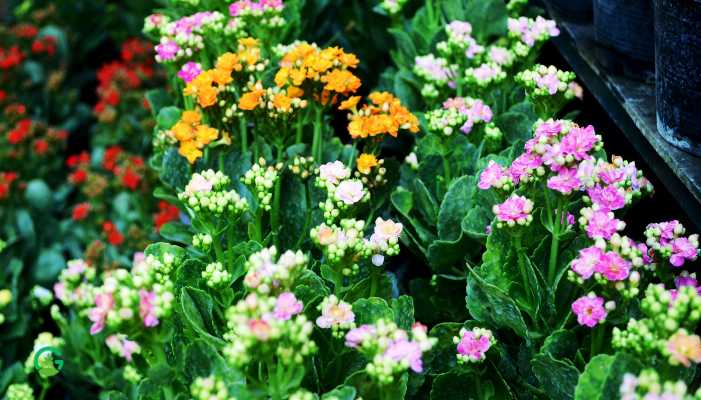
Benefits of Growing Kalanchoe Plant
- Low Maintenance: Kalanchoes are succulents, meaning they require minimal watering and care.
- Year-Round Blooms: With the right care, Kalanchoes can bloom multiple times a year.
- Indoor and Outdoor Versatility: These plants can thrive both indoors and outdoors, making them highly adaptable.
- Air Purification: Like many other houseplants, Kalanchoes can help purify the air in your home.
How to Grow Kalanchoe Plant
Growing Kalanchoe successfully involves understanding its light, soil, water, and temperature needs. Here’s a step-by-step guide:
Choosing the Right Pot and Soil
- Pot: Select a pot with drainage holes to prevent waterlogging, which can lead to root rot.
- Soil: Use a well-draining succulent or cactus potting mix. You can also create your own mix by combining regular potting soil with sand or perlite to improve drainage.
Planting Kalanchoe
- Prepare the Pot: Place a layer of gravel or small stones at the bottom of the pot to enhance drainage.
- Add Soil: Fill the pot with your succulent mix, leaving space for the plant.
- Planting: Gently place the Kalanchoe in the pot, spreading its roots over the soil. Fill in around the roots with more soil, pressing lightly to secure the plant.
- Watering: Water the plant lightly after planting to settle the soil.
Light Requirements
Kalanchoes thrive in bright, indirect light. They can tolerate direct sunlight for a few hours daily, which helps enhance their flower color. However, too much direct sun can scorch the leaves.
- Indoors: Place your Kalanchoe near a south or west-facing window.
- Outdoors: Provide partial shade, especially in hot climates.
Watering Kalanchoe
Kalanchoes prefer to dry out between waterings. Overwatering is the most common cause of problems with these plants.
- Watering Schedule: Water thoroughly when the top 1-2 inches of soil feel dry to the touch. In the winter, reduce watering as the plant’s growth slows down.
- Method: Water the soil directly, avoiding the leaves, to prevent rot.
Temperature and Humidity
Kalanchoes prefer moderate temperatures and low humidity.
- Temperature: Ideal temperatures range from 60-85°F (15-29°C). Avoid exposing the plant to temperatures below 50°F (10°C).
- Humidity: Average household humidity is fine. Avoid overly humid conditions, which can lead to fungal issues.
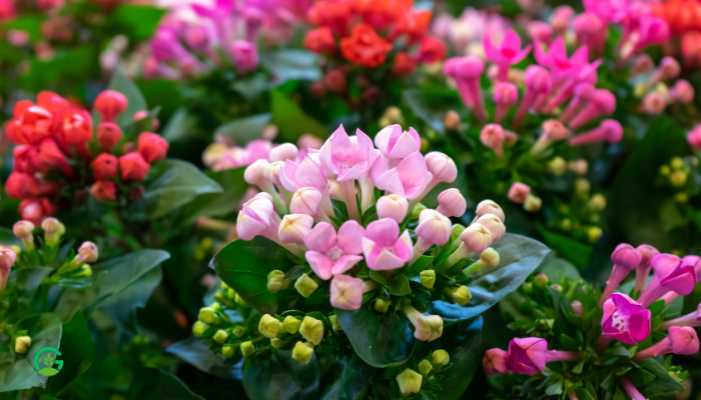
Caring for Kalanchoe Plant
Once your Kalanchoe is established, regular care is straightforward.
Fertilizing
Feed your Kalanchoe during the growing season (spring and summer) to encourage healthy growth and blooms.
- Type: Use a balanced, water-soluble fertilizer diluted to half strength.
- Frequency: Fertilize once a month during the growing season. Avoid fertilizing in the winter when the plant is dormant.
Pruning
Pruning helps maintain the plant’s shape and encourages new growth.
- When to Prune: After the plant has finished blooming, trim off spent flowers and any leggy growth.
- How to Prune: Use clean, sharp scissors or pruning shears to cut back stems just above a leaf node.
Repotting
Kalanchoes benefit from being repotted every 2-3 years to refresh the soil and accommodate growth.
- When to Repot: Early spring, before the growing season begins.
- How to Repot: Choose a slightly larger pot and follow the planting steps outlined above.
Image | Product Name | Review | Price |
Common Problems and Solutions
Pests
Kalanchoes can occasionally attract pests like aphids, mealybugs, and spider mites.
- Symptoms: Look for sticky residue, cottony masses, or fine webbing on the plant.
- Treatment: Use insecticidal soap or neem oil to treat infestations. Regularly inspect your plants to catch issues early.
Diseases
Overwatering can lead to root rot and other fungal diseases.
- Symptoms: Yellowing leaves, wilting, and a foul smell from the soil.
- Treatment: Reduce watering and improve drainage. In severe cases, repot the plant in fresh soil.
Leggy Growth
Insufficient light can cause Kalanchoes to become leggy and stretched.
- Solution: Move the plant to a brighter location and consider using a grow light if natural light is insufficient.
Read More
Propagating Kalanchoe Plant
Propagating Kalanchoe is a rewarding way to create new plants from your existing ones. The two main methods are leaf cuttings and offsets.
Leaf Cuttings
- Select a Leaf: Choose a healthy, mature leaf.
- Cut the Leaf: Using a clean knife or scissors, cut the leaf close to the stem.
- Let It Callus: Allow the cut end to dry and callus over for a few days.
- Plant the Cutting: Place the callused end in a pot with succulent soil mix.
- Water Sparingly: Water lightly until roots develop, then care for it as a mature plant.
Offsets
Many Kalanchoe species produce offsets or “pups” at the base of the plant.
- Remove the Offset: Gently separate the offset from the parent plant using a clean knife.
- Plant the Offset: Place the offset in a pot with succulent soil mix.
- Water Lightly: Water sparingly until established.
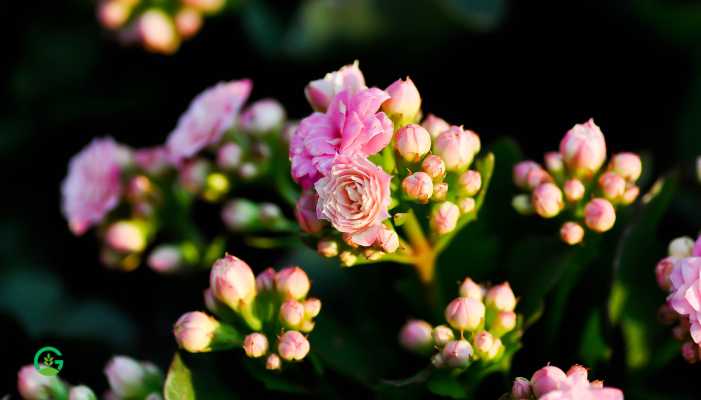
Kalanchoe Plant FAQs
How often should I water my Kalanchoe?

Water your Kalanchoe thoroughly when the top 1-2 inches of soil are dry. This typically means watering every 2-3 weeks, but the frequency can vary based on climate and season. In winter, reduce watering as the plant’s growth slows down.
Can Kalanchoe plants tolerate direct sunlight?

Kalanchoes can tolerate a few hours of direct sunlight daily, which can enhance their flower color. However, too much direct sun, especially in hot climates, can scorch the leaves. It’s best to provide bright, indirect light or partial shade.
Why are the leaves of my Kalanchoe turning yellow?

Yellowing leaves can be a sign of overwatering, which leads to root rot. Ensure the soil dries out between waterings and that the pot has good drainage. Yellow leaves can also indicate insufficient light, so check the plant’s light conditions.
How do I get my Kalanchoe to bloom again?
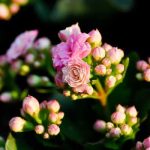
To encourage your Kalanchoe to bloom again:
Provide bright, indirect light.
Ensure the plant gets about 14 hours of darkness each night for 6 weeks to stimulate flowering.
Fertilize monthly during the growing season with a balanced, water-soluble fertilizer.
Is Kalanchoe toxic to pets?

Yes, Kalanchoe plants are toxic to cats and dogs. They contain compounds called bufadienolides, which can cause vomiting, diarrhea, and lethargy if ingested. Keep the plant out of reach of pets, or consider choosing a non-toxic alternative if you have curious animals at home.
Can I grow Kalanchoe outdoors?

Yes, Kalanchoe can be grown outdoors in regions with mild, frost-free climates. They prefer temperatures between 60-85°F (15-29°C) and should be placed in a location with partial shade to avoid intense midday sun. In colder climates, Kalanchoe can be grown outdoors during the warmer months and brought inside before temperatures drop below 50°F (10°C).
How do I deal with leggy growth?

Leggy growth in Kalanchoe typically results from insufficient light. To fix this:
Move the plant to a brighter location with more indirect light.
Prune back the leggy stems to encourage bushier growth.
Rotate the plant regularly to ensure all sides receive equal light.
Can I propagate Kalanchoe from seeds?

While propagating Kalanchoe from seeds is possible, it is not as common as using leaf cuttings or offsets. If you wish to try seed propagation:
Collect Seeds: If your plant produces seed pods, collect the seeds once they are ripe.
Sow Seeds: Sprinkle the seeds on the surface of a well-draining succulent mix.
Lightly Water: Keep the soil moist but not wet until the seeds germinate.
Provide Light: Ensure the seedlings receive bright, indirect light as they grow.
What kind of fertilizer is best for Kalanchoe?

A balanced, water-soluble fertilizer with equal parts nitrogen, phosphorus, and potassium (e.g., 10-10-10) is ideal for Kalanchoe. Dilute the fertilizer to half the recommended strength and apply it once a month during the growing season (spring and summer). Avoid fertilizing in the winter when the plant is dormant.
Why is my Kalanchoe not blooming?

Several factors can prevent a Kalanchoe from blooming:
Insufficient Light: Ensure the plant gets bright, indirect light.
Incorrect Temperature: Maintain temperatures between 60-85°F (15-29°C).
Lack of Darkness: Provide the plant with 14 hours of darkness each night for about 6 weeks to stimulate blooming.
Nutrient Deficiency: Fertilize monthly during the growing season with a balanced fertilizer.
Kalanchoe Plant Conclusion
Kalanchoe plants are a delightful addition to any indoor or outdoor garden, providing vibrant flowers and low-maintenance care. By understanding their specific requirements for light, water, soil, and temperature, you can ensure your kalanchoe thrives year-round. With proper care, these resilient succulent plants can bring lasting beauty and joy to your home.
Remember, the key to successful kalanchoe care is striking the right balance between light, water, and temperature. By following the guidelines outlined in this comprehensive guide, you’ll be on your way to becoming a kalanchoe expert, enjoying the colorful flowers and robust growth of this amazing plant.
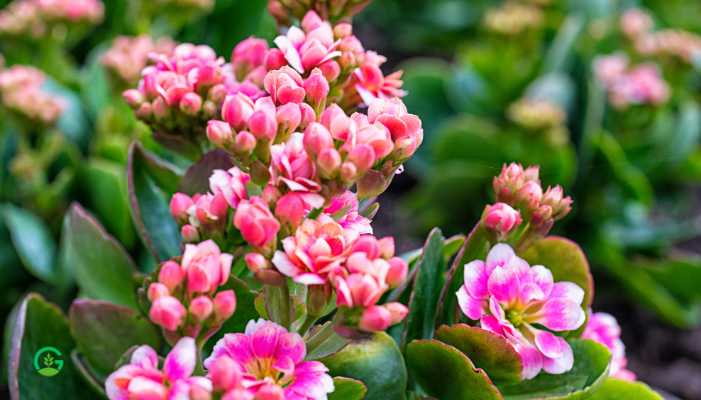




















2 thoughts on “How to Grow and Care for a Kalanchoe Plant”